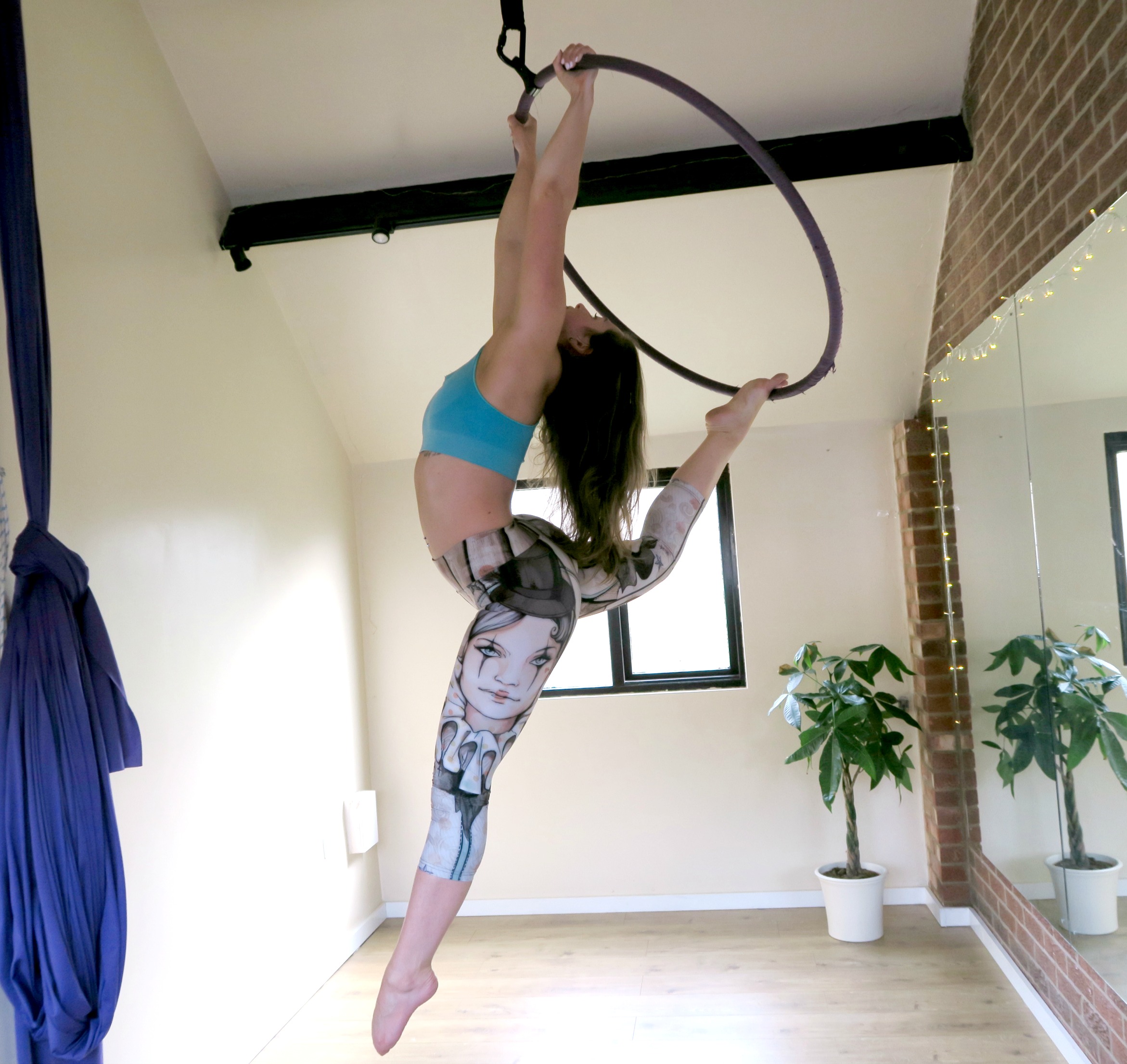Once you have been attending aerial hoop lessons for a while, it’s natural to want your own hoop. It can be so frustrating getting home and just wanting to practise the moves you have learnt! Especially if you can only have lessons once a week or so. For a lot of people, having a hoop at home isn’t an option. If you are lucky and have somewhere to hang it, there are a few things you should think about before you buy one.
The hoop
Getting the correct size and type of hoop for you is important. An aerial hoop is made from metal, usually steel and they come in a variety of sizes. The easiest way to know the correct size is to sit on a chair, measure from the chair to the top of your head and add 10cm. Some people do prefer smaller or bigger hoops than their correct size so if you have a hoop at your aerial school that you really like then it’s a good idea to get the same size. I personally prefer a slightly smaller hoop, mine is 90cm.
You can get different types of hoop, the most common are one point or two point. Again, the hoop you have lessons on will probably determine which you prefer. The two point hoops are more stable so are generally better for beginners. The one point hoops rotate more so beginners can feel less secure in them. You can do different moves using the strops on both, the one point is slightly more versatile as there’re a few more moves you can do on the strop. I got my hoop from Firetoys.
Mat
A big, thick crash mat is super important. We often forget that aerial arts can be quite high risk. It only takes a tiny slip of concentration to fall out of the hoop so having a mat underneath you could save you from a broken arm or worse! A 6 inch crash mat is about the right thickness. A thin pole or yoga mat definitely won’t save your head if you fall. Even with all the safety precautions, accidents can still happen so it’s a good idea to minimise the risk as much a possible. Read about my accident here From Aerial to A & E.
Other equipment
You’ll need strops to hang the hoop. One strop for a one point hoop or two strops for a two point hoop. These vary in lengths, ideally it’s best if the strop is long enough that you can do moves on the strop and also moves hanging under the hoop. Depending on your ceiling height this is not always possible so pick what moves you prefer to practise to decide the length you need the strop to be. Carabiners are usually used to rig the hoop. You can attach the strop directly to the hoop or use a carabiner in between. Make sure the carabiner you use is suitable for aerial. A swivel is something you might also like to get. This enables the hoop to spin so is best for intermediate/advanced hoopers. I get all of this type of equipment from Firetoys.
Rigging
I won’t go too much into rigging as there are so many things to consider when rigging safely. If you are hanging your hoop in your house/garage, make sure you get a professional to install and weight test whatever you are hanging it from. Alternatively A-frames made specifically for aerial are available. These are great for outdoor hooping or if you have nowhere to hang the hoop from. They are good for practising individual moves but depending on the size they can be difficult to use for spins and routines as its easy to hit your legs/arms/the hoop on the sides.
Taping the hoop
As aerial hoops are made from metal, it’s very common to tape/wrap the hoop using adhesive tape. This enables you to wear leggings and long sleeved tops when you use the hoop and still be able to grip. Tape provides the hoop with some protection from being scratched. It also comes in all colours so you can have any colour to suit you! Below is a video on how to wrap your aerial hoop. The downside of tape is that is get stick to clothes and can give you lovely friction burns!
What do you love to practise on your hoop? xx


Comments